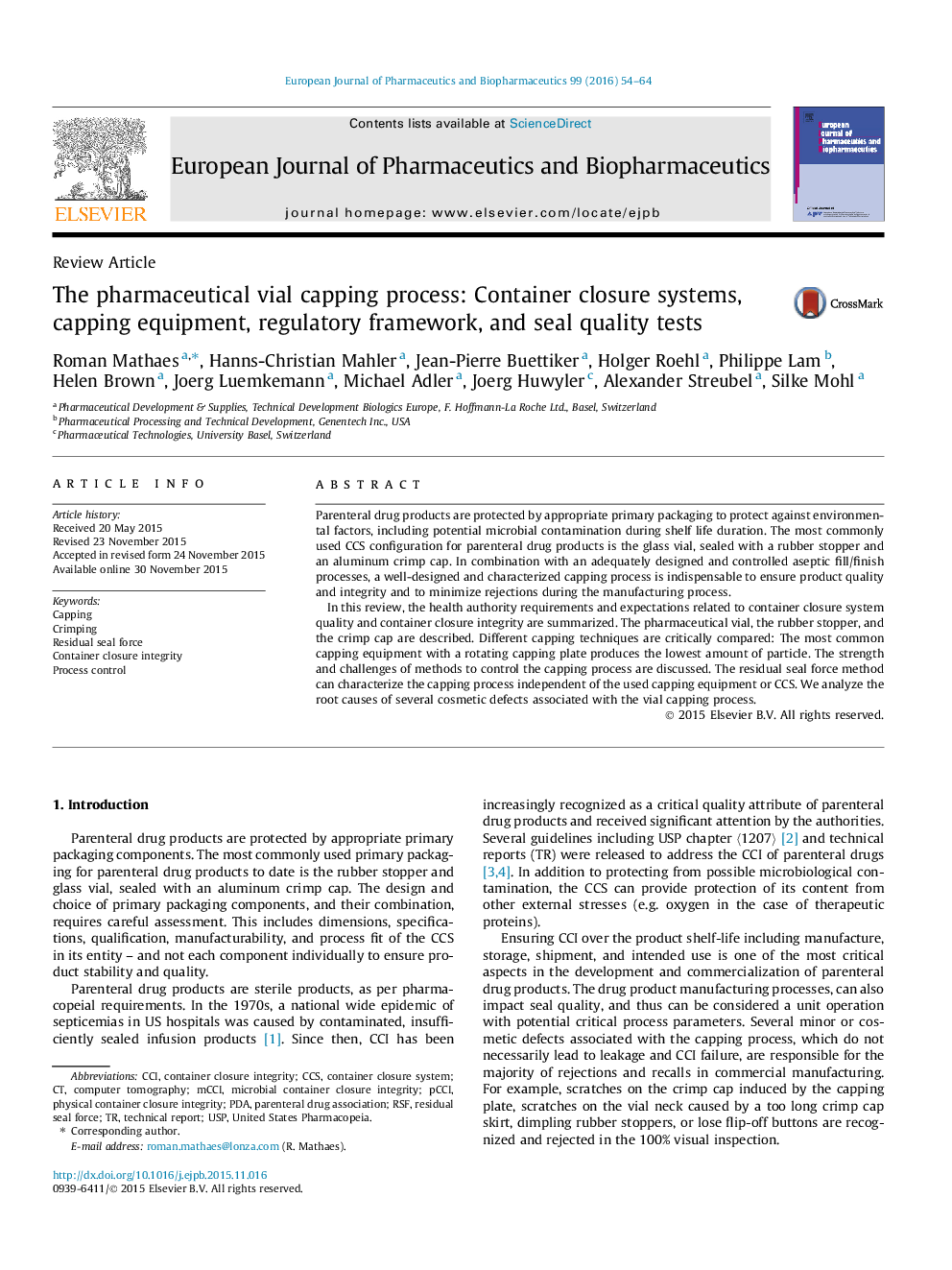| Article ID | Journal | Published Year | Pages | File Type |
|---|---|---|---|---|
| 2083391 | European Journal of Pharmaceutics and Biopharmaceutics | 2016 | 11 Pages |
Parenteral drug products are protected by appropriate primary packaging to protect against environmental factors, including potential microbial contamination during shelf life duration. The most commonly used CCS configuration for parenteral drug products is the glass vial, sealed with a rubber stopper and an aluminum crimp cap. In combination with an adequately designed and controlled aseptic fill/finish processes, a well-designed and characterized capping process is indispensable to ensure product quality and integrity and to minimize rejections during the manufacturing process.In this review, the health authority requirements and expectations related to container closure system quality and container closure integrity are summarized. The pharmaceutical vial, the rubber stopper, and the crimp cap are described. Different capping techniques are critically compared: The most common capping equipment with a rotating capping plate produces the lowest amount of particle. The strength and challenges of methods to control the capping process are discussed. The residual seal force method can characterize the capping process independent of the used capping equipment or CCS. We analyze the root causes of several cosmetic defects associated with the vial capping process.
Graphical abstractFigure optionsDownload full-size imageDownload high-quality image (132 K)Download as PowerPoint slide
